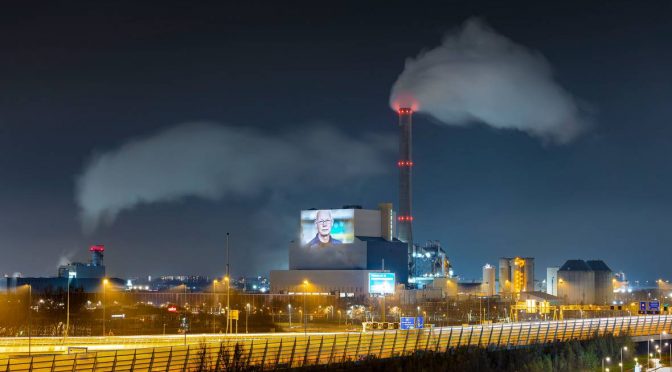The closing of Hemweg 8 is the result of legislation by the Dutch government that has decided to phase out coal production in the country.
Alexander van Ofwegen, Director of Heat & Production at Vattenfall Netherlands says: “Vattenfall sees no future for coal” and in the coal phase-out discussion in the Netherlands we have been clear from the start that we were open to early closure of Hemweg 8.”
The Dutch Senate recently passed a law banning the use of coal for electricity generation in the country. As is stated in that law, Vattenfall will be fairly compensated by the Dutch state for the closure of the power plant five years earlier than planned. Hemweg-8 will close definitively on 23 December.
Conversion to renewable production
As part of the transformation of the energy sector in the Netherlands, Vattenfall is investing in renewable electricity generation through, above all, wind and solar power. Among other things, Vattenfall has won the concession for the offshore wind farms Hollandse Kust Zuid 1-4 with a total installed capacity of 1500 MW. This is the world’s largest wind farm built without subsidies.
Hemweg 8 was inaugurated in 1994 and has an installed capacity for electricity generation of 650 MW. The dismantling of Hemweg 8 will commence next year. The Vattenfall-site on Hemweg will in the future function as a fossil-free hub for electricity and heat, both in production, as well as in transit and temporary storage of energy. Almost all of the 200 employees at Hemweg 8 have been offered employment in other parts of Vattenfall or will retire.
Ringhals 2 nuclear plant shuts down
At the end of the year, Ringhals 2 will shut down operations and stop supplying electricity to the Swedish power grid. The final shutdown of Ringhals 2 began back in September, when the plant went into a phase called coast down. This means that the reactor output falls as the energy in the fuel decreases. In November the output fell to below 50 per cent and one of the turbines was taken out of operation. On 30 December the other turbine will also be shut down and electricity generation will cease.
The decision to close two reactors at Ringhals was taken in 2015. Reactor 2 is to close this year and reactor 1 next year, 2020, which means that the reactors will close five years earlier than originally planned.
The closure decision was taken for commercial reasons, and although the price of electricity has recovered since 2015, the assessment is that it would not be possible to continue operation of either of the two reactors, for both economic and practical reasons.

Ringhals has around 1,260 employees. Roger Olsson, David Hedman and Viktoria Olsson all started in the control room at Ringhals 2 almost 15 years ago. Although the reactor will be closing at the end of December, none of the three are particularly concerned about the future, and they say that in spite of everything there is a good atmosphere among the staff:
“Ringhals 2 will need to be staffed for at least another couple of years. The closing day would have come in any case – now it’s just coming a few years sooner,” says David Hedman.
All three of them agree that what they will miss most of all in the future is the people and the sense of community in the shift team.
“What I feel sad about is that the shift team will be split up,” says Roger Olsson. “There’s something special about working in shifts. You become a family that eats dinner and celebrates holidays together.”
The decommissioning is particularly significant for Roger Olsson, since his father was among the staff who started up reactor 2 at Ringhals 44 years ago, in 1975.
“Now the circle is closing – I’m pulling down what my dad built up,” as he puts it.
FACTS
Ringhals 2 was put into commercial operation in 1975, and ever since then has led an eventful life, with both ups and downs. Among other things, the plant has had its steam generators and control room replaced, survived a fire and had the bottom plate of its reactor containment renovated. But in spite of causing a certain amount of anxiety, Ringhals 2 has always recovered and, during its 44-year service life, has supplied Sweden with 215 TWh of fossil-free nuclear electricity.


